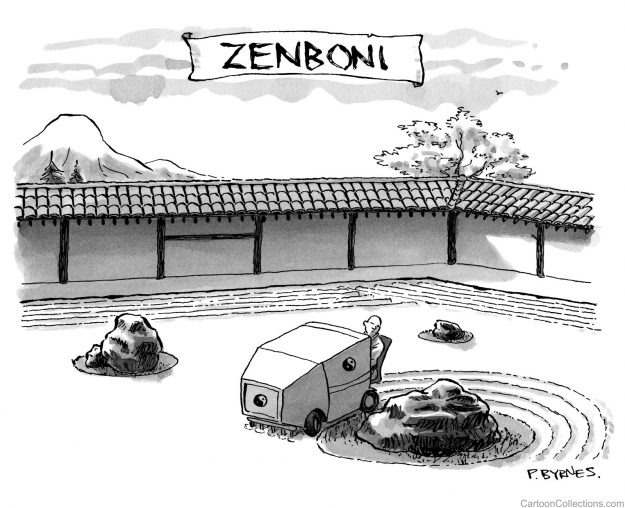Matthew Gindin’s “The Buddhist Roots of Hatha Yoga” (Fall 2019) stirred up a discussion about the benefits and pitfalls of mixing spiritual traditions, a topic that’s “highly relevant for contemporary seekers,” reader Niveditha Hasthek said. Scott Vannoy was confident in his take—“Purists are silly. That’s all.” Yet Pami Ann Jones held a more moderate view, “Aren’t we all products of everything we’ve experienced in life? We are all an individual mix.”
Meanwhile, as America continues to grapple with the realities of both domestic and global violence, Buddhist practitioners are navigating ways to respond both personally and collectively. The Pocket Project’s Global Social Witnessing program (“A New Initiative Battles with Collective Traumas,” Aug. 22, 2019, tricycle.org) brings together people from all over the world to process large-scale tragedies, and their group mindfulness techniques struck readers as revolutionary. Robert Fauconneau noted that “living in the American South and witnessing the visual, economic, spiritual, and psychological evidence of collective trauma can be painful for everyone concerned.” Fauconneau felt, however, that the Social Witnessing technique offers a way to turn that acknowledgment of pain into healing. The article “An El Paso Buddhist Center on Violence and the Seeds of Hate” (Aug. 13, 2019, tricycle .org), which featured the Chenrezig Tibetan Buddhist Cultural Center’s response to the city’s August 3rd mass shooting, resonated with reader Lisa Sandweiss Droski, who assisted the Red Cross in El Paso after the massacre. “I try to bring compassion and equanimity into every situation,” she wrote. “Some situations are more difficult than others.”
Soygal Rinpoche’s death at the end of August reignited discussion of substantiated abuse allegations against the founder of Rigpa International (“Sogyal Rinpoche Eulogies Make Victims Disappear, Critics Charge,” Sept. 9, 2019, tricycle.org). Some readers felt conflicted about their gratitude for his published teachings, given the mental, physical, and sexual abuse he perpetrated on some of his students. Donna Evans remembered how meeting Sogyal Rinpoche “changed my life and affected the care I gave to my patients and family as a caregiver.” Evans added, “I still receive healings from his teachings.” Dean Stauffer pushed back against tendencies to commemorate only people’s good qualities when they die—a custom recently described by the Central Tibetan Administration as the “minimum courtesy” to the deceased in Tibetan culture. It’s important to “acknowledge the mess they made alongside whatever good they did in their lives,” Stauffer insisted. In response to calls to separate a person’s work and personal life, Helen Kemp asked, “How can you separate Sogyal’s behavior (and therefore his character) from his work when his work was to teach compassion and loving kindness?”
In “Why We Yell and Scream” ( July 31, 2019, tricycle.org), Patricia Ullman outlined the reasons survivors of sexual abuse don’t need to be told to “tone it down” when they call out perpetrators and demand redress. In response, Gillian Salvestro concluded, “It’s important to have more compassion for the victim than the perpetrator of a crime.” While the inclination to care more for a victim than a perpetrator is shared by many—if not most—of us, Buddhism’s challenge is to treat all beings with compassion. As Max Hashi reminds us, balance— or equanimity—is a Buddhist virtue. “It’s important to recognize that there’s a victim and a perpetrator,” he wrote. “Nonetheless, I think the Buddhist community should as well acknowledge that every abuser is also a victim, of him or herself at least, and start a conversation, aiming to better understand why such things happen and how to change the world for the better. That’d be a true compassionate approach.”
Advice on making retreats affordable from Justin Von Bujdoss (“Ask a Teacher,” Fall 2019) prompted readers to give some of their own tips. Claire Murphy noted that retreats in “far-flung places” come at a high cost not only financially but also in terms of one’s carbon footprint. She added that online accessibility to teachings has made home retreats easier in recent years.
Readers also asked for and gave advice about countering burnout in response to “Taking Care of Others Without Exploding into a Thousand Bits” (Aug. 20, 2019, tricycle.org). Crystal Meyer asked, “What about … caring for aging parents, a mentally ill spouse, a friend, or your sick child, when there’s no checkout available?” Bonnie France Reese chimed in with practical suggestions such as doing a little meditation while folding laundry or making a bed, and added, “Remember that taking a mental health break helps [the person you’re caring for]. A walk outside the hospital or a quiet 20 minutes with coffee and a book in the lobby can do wonders.”
The Question
Who’s your favorite Buddhist figure, past or present?
Rev. Sunya Pratt (1898–1986), a pioneering American Shin teacher. She fearlessly led at a time when people felt Buddhist teachers had to be male. —Rev. Patti Nakai
Sujata, the girl whose act of generosity put a stop to Gautama’s ascetic days. Without her, he might never have awakened. —Andy Wimbush
Kakushinni, a 13th-century Japanese woman who looked after her father, Shinran Shonin [the founder of Shin Buddhism], and donated land she inherited after her husband’s death so that her father’s teachings could continue. —Ken Madden
Thich Nhat Hanh: It’s hard to talk about Western Buddhism in the 21st century without him. He has helped introduce so many people to Buddhism and mindfulness that he is almost a dharma gate himself. —C. Taylor Sutton Buddhist teacher
Stephen Batchelor is my favorite because of his clear and compassionate explanation of Buddhism without supernatural beliefs (to paraphrase the title of one of his best-known books). For me, as a philosophical naturalist, that opened the gate to Buddhist practice many years ago and continues to nourish and guide my practice today. —David Whiteside
For the next issue: Did you encounter Buddhism or meditation first? Email your brief responses to editorial@tricycle.org
